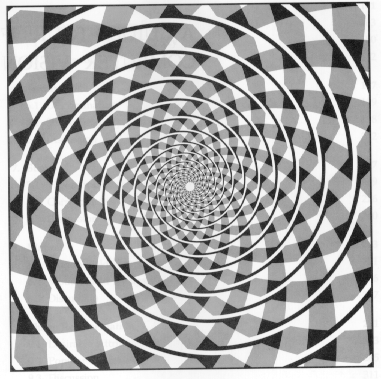
 |
| Fraser's spiral |
Optical illusions are based on the falliblity of human perception. They are image tricks that confuse the brain's analytic software can be fallible. The illusory spiral evoked here is actually a collection of conentric circles, each circle comprising segments angled toward the center. To convince yourself that there is indeed no spiral, try tracing a spiral with your finger.
Fraser, J., "A New Visual Illusion of Direction", The British Journal of Psychology, Vol. 2, pp307-320 (1908).
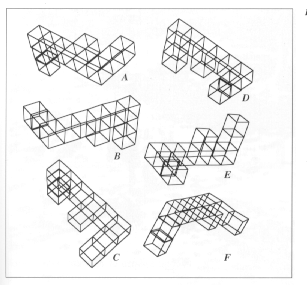 |
| Which of the representations is/are identical and which are mirror images? |
We judge the relative size and shape of objects by mentally rotating them to the same orientation, overlapping them in our minds, and performing a direct comparison.
The time needed to decide the answer to the question above is proportional to the misalignment, indicating that we literally "turn the objects over" in our minds to compare them.
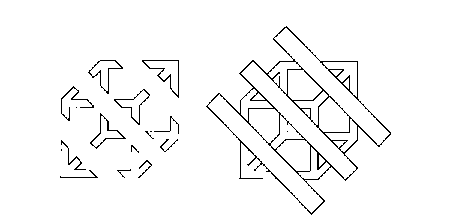 |
Although we can "think" of the fragments in (a) as constituting a cube, it is difficult to "see" a cube. In contrast, we readily "see" a cube in (bf), which we can derive from (a) by introducing three "opaque" stripes.
Kanizsa, G., Organization in Vision: Essays on Gestalt Perception, Praeger Publishers, New York (1979).
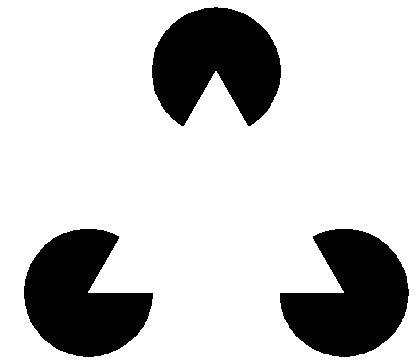 |
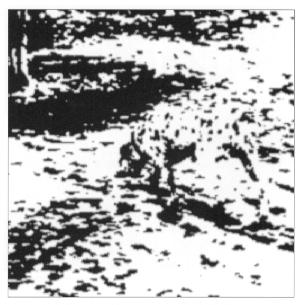 |
| An example of camouflage (Ron C. James) |
Grouping together many seemingly distinct features in the image and ignoring apparent similiarities between others allows the eye to find the real structures present.
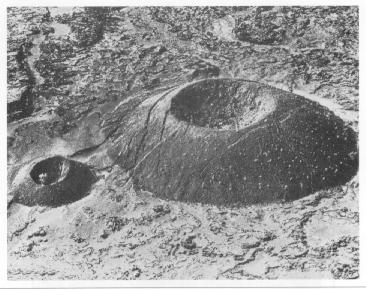 |
| An image whose interpretation by humans changes when the image is turned upside down |
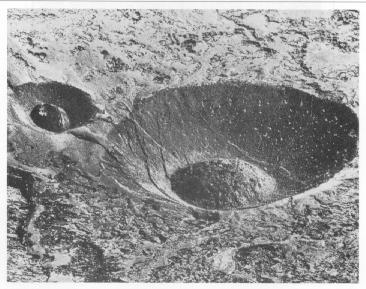 |
If you turn this photograph of two lava cones with craters upside down, you will perceive it to be the image of two craters with mounds. The reversal of the perceived concavities and convexities is due to an implicit assumption by the viewer that the scene is lit from above.
Rittenhouse, D, "Explanation of Optical Deception", Transactions of the American Philosophical Society, Vol2, pp 37-42 (1786). Photograph provided by Associated Press/Wide World Photos, 1972).
 |
| Photograph by Herer Gehr, Life, July, 1947. |
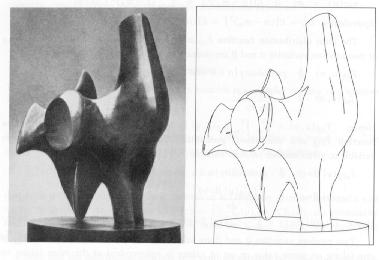 |
| "The Archer", working model, by Henry Moore, 1964 |
On the left is an image of a working model of a sculpture, and on the right is an artist's rendering of some of salient brightness edges in the image.
Photograph courtesy The Henry Moore Foundation, Much Hadham, England.
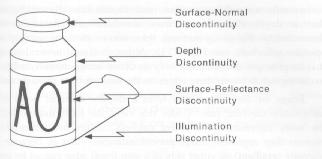 |
Physical events in a scene that may lead to intensity edges in an image of a scene.
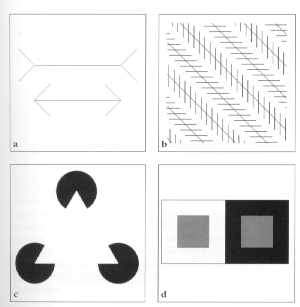 |
Maintained by John Loomis, last updated May 8, 1997